|
AD-4W/AEW.1 Skyraider
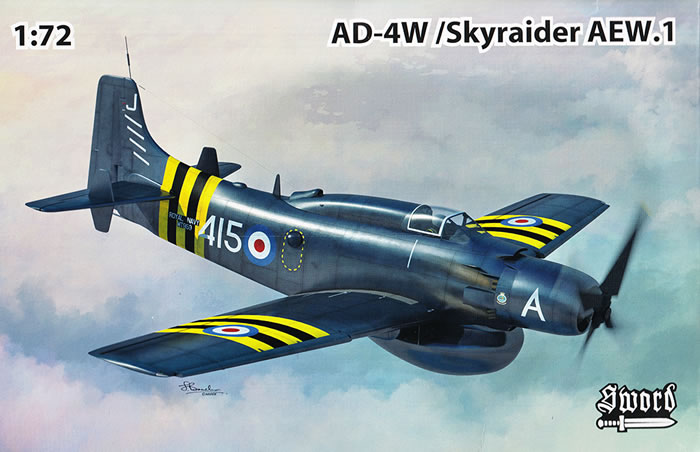
Sword, 1/72 scale
S
u m m a r y |
| Description and Catalogue Number: |
Sword Kit No. 72126 – AD-4W/AEW.1 Skyraider |
| Scale: |
1/72 |
| Contents and Media: |
74 parts in grey coloured plastic; four clear plastic parts; one resin part; decals for three marking options. |
| Price: |
GBP£17.99 EU/£14.99 Export Price plus shipping available online from Hannants
and hobby retailers worldwide |
| Review Type: |
FirstLook |
| Advantages: |
Crisp detail, minimum flash, 3 dark blue schemes (2 USN and one RAN with Suez stripes) and now the only current version on offer. Really nice resin engine. |
| Disadvantages: |
Limited release kit so will need some test fitting to ensure a good fit. Paint call outs are generic colours with no brand or FS information. Flimsy end opening box. |
| Conclusion: |
A new release from Sword which succeeds the only kit prior, the Airfix kit of great age. A worthy new offering from Sword. |
Reviewed by David Couche

Airfix's 1/48 scale Spitfire Mk. Vb will be available online from Squadron.com
The Douglas A-1 Skyraider (formerly AD Skyraider) is an American single-seat attack aircraft that saw service between the late 1940s and early 1980s. The Skyraider had a remarkably long and successful career; it became a piston-powered, propeller-driven anachronism in the jet age, and was nicknamed "Spad", after the French World War I fighter.
The AD-4W was a three-seat airborne early warning version of the AD-4 with a more powerful R-3350-26WA engine. 158 were built of this version. The AD-4W carried a crew of three--a pilot underneath a transparent canopy, plus two observers seated side-by-side below and behind the cockpit. The two observers entered the aircraft via doors in either side of the fuselage adjacent to the wing trailing edge.
It was operated by the United States Navy (USN) and also saw service with the British Royal Navy, the French Air Force, the Republic of Vietnam Air Force (RVNAF), and others. It remained in U.S. service until the early 1970s.
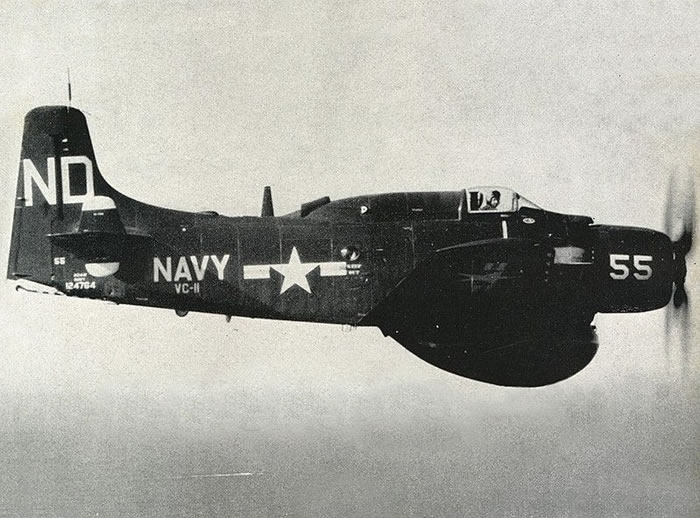
It was a three-place unarmed early warning aircraft, with two radar station operators and AN / APS-20 navigation and search radar in a huge fairing under the fuselage. A small series of 30 aircraft produced a version of long-range radar detection AD-3W. Under the fuselage of each of them, a bulky fairing of the rotating AN / APS-20 radar antenna was suspended. The unusual appearance of the aircraft, reminiscent of the famous aquarium fish, was the reason for the playful nickname - "Guppy". The reconnaissance crew consisted of three people: a pilot and two operators of airborne equipment, one of which was observing the air situation, and the other was in constant radio communication with an aircraft carrier or airplanes in the air.
The AD-4W, the long-range radar (radar) radar equipped with the AN / APS-20A radar, was a modification of the AD-4, its characteristics were greatly improved, compared to the AD-3W radar. Thus, the transmitter power, according to American sources, was reduced to one megawatt. Such a high value seems very doubtful, given that the power of most modern ground-based radars manufactured without significant limitations in size and mass does not exceed several hundred kilowatts.
Vibrations of the bulky fairing and shading of the view by the fuselage and wings greatly reduced the range and quality of detection of air targets. Despite this, the aircraft was widely used in Korea. The AD-3W and AD-4W were constantly "suspended" in the air and warned ships of the approach of enemy aircraft.
The radar was the S-band (today's E/F band) AN/APS-20A, which was improved over that which was installed in the AD-3W. Its maximum output was 1 megawatt, and it had an elliptical dish antenna rotating inside a bulbous fiberglass radome located underneath the fuselage. The radome was a source of considerable structural problems and often vibrated severely, affecting the success of the early-warning mission.
Fifty AD-4Ws were transferred to the Royal Navy as Skyraider AEW 1s. Those remaining in service with the US Navy were adapted to the search role in anti-submarine warfare.

The Royal Navy acquired 50 AD-4W early warning aircraft in 1951 through the Military Assistance Program. All Skyraider AEW.1s were operated by 849 Naval Air Squadron, which provided four-plane detachments for the British carriers. One flight aboard HMS Bulwark took part in the Suez Crisis in 1956. 778 Naval Air Squadron was responsible for the training of the Skyraider crews at RNAS Culdrose. In 1960, the Fairey Gannet AEW.3 replaced the Skyraiders, using the APS-20 radar of the Douglas aircraft. The last British Skyraiders were retired in 1962.
*Text mainly from Wikipedia
Prior to the release of this AD-4W/Skyraider AEW.1 from Sword, the only kit in 1/72 was the old and long out of production Airfix kit. The only other way to have an AD-4W was one of the conversion sets which involved some serious surgery of a standard Skyraider kit. This kit, therefore, is a huge improvement over the other prior offerings of this aircraft.
The kit has 2 grey sprues of 74 injected parts which are clean with minimal flash and typical of Sword, have a shiny surface. A sprue of nice and clear parts is supplied, as is a nicely detailed resin cast radial engine.
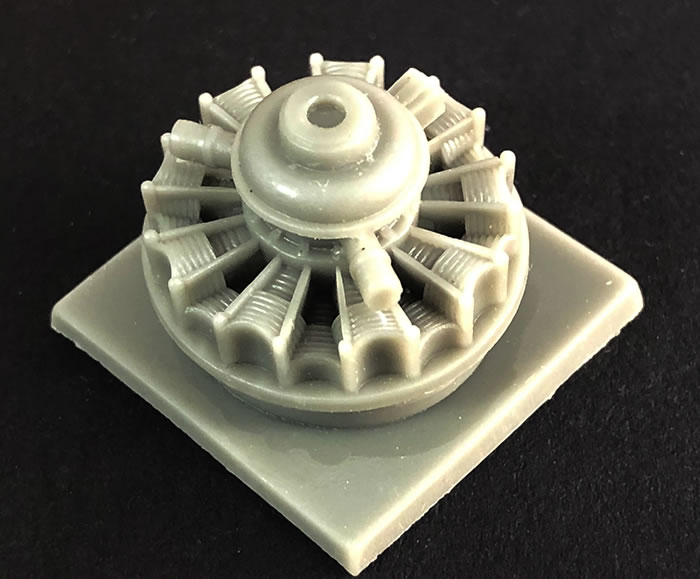
There are decals for 3 aircraft, 2 USN aircraft of Korean vintage and a RAN one with colourful Suez stripes and a set of instructions. The main parts have recessed details which are even and of a suitable size for the scale.
Sprue A
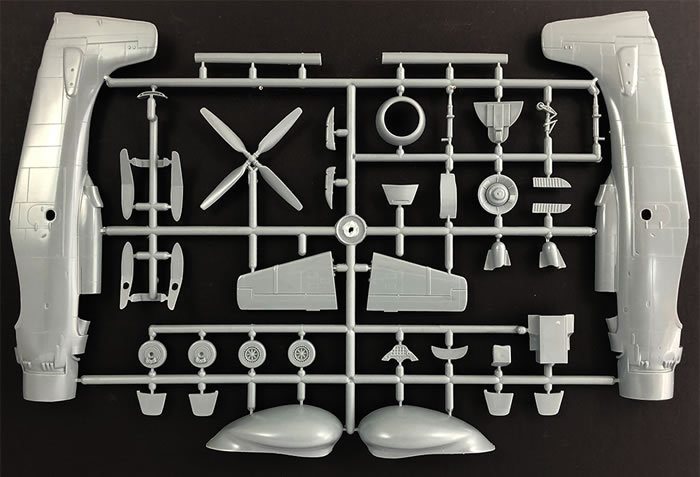
Sprue A has the fuselage halves, tail planes, propeller, cockpit tub, instrument panel, engine nose cowling, wheels with excellent detail, as well as a number of other sundry parts. Sprue gates are restrained and there is very little sign of flash and any mould marks are fairly minor.
Sprue B
This sprue has the upper wing panels and a one piece lower wing. Again, detail is kept to suitably recessed panel lines and raised detail where required. Sprue B also has the undercarriage parts, cooling vents for the engine and a number of other small airframe parts.
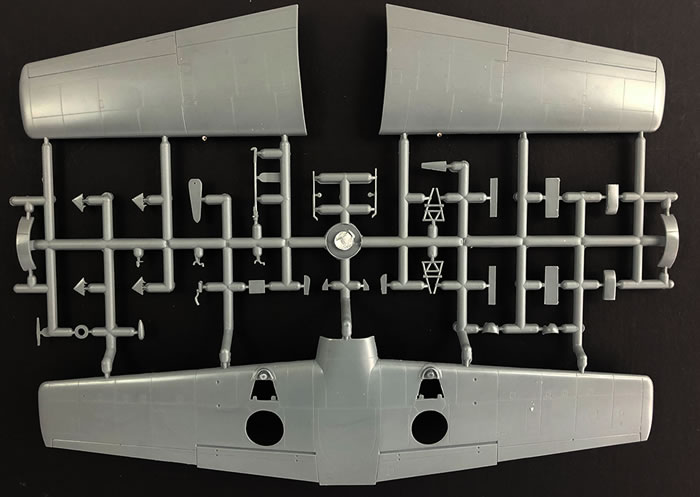
As you would expect from a limited release manufacturer, there are no location tabs or point so carefully alignment is a must. Test fitting of the wing sections shows a very neat join, so I wouldn’t expect much in the way of problems for the rest of the model. The parts count is not large so construction should be fairly straight forward.
The kit gives a basic cockpit which will be visible through a reasonable size windscreen
The canopy is a clear and fault-free moulding. The thickness is quite appropriate for the scale. The clear sprue supplies the small door porthole windows that are on this aircraft.
Clear Sprue
The clear sprue comprises four parts.

The windscreen and sliding section are separate parts.
Marking Options
There are three schemes.
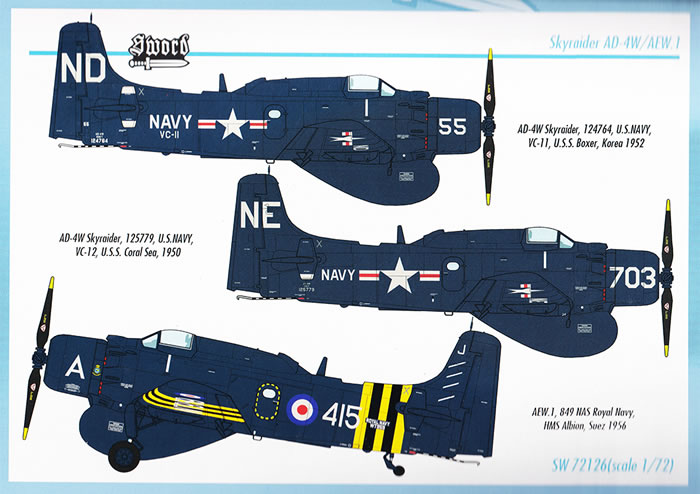
Details are as follows:
-
AD-4W Skyraider, Bu No 124764, USN, VC-11, USS Boxer, Korea, 1952
-
AD-4W Skyraider, Bu No 125779, USN, VC-12, USS Coral Sea, 1950
-
Skyraider AEW.1, 415/A, NAS Royal Navy, HMS Albion, Suez, 1956
The decals are printed by Techmod and having used them previously apply and settle well.
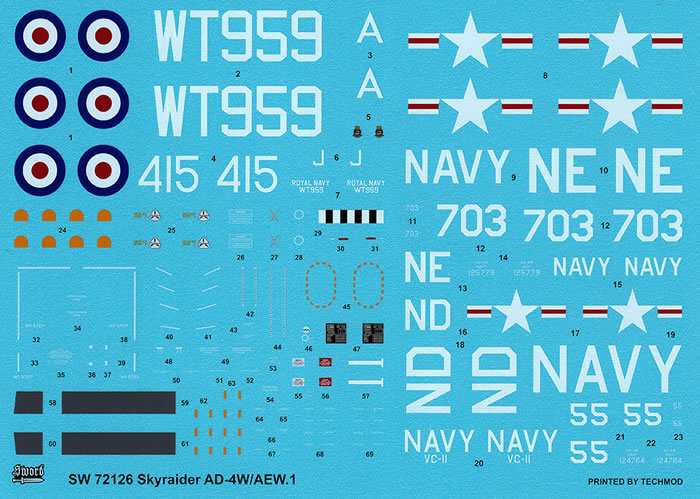
There is minimal carrier film evident and they seem to be in excellent register. Colour call outs are generic colours and some of the details are very vague on what to paint so some good reference photos will certainly help you
This kit gives modellers a new moulding of the AD-4W Skyraider which is a marked improvement on the venerable old Airfix kit. Hats off to Sword for moulding more interesting subjects that a not really mainstream.
To be honest, it will take care and the checking of fit….many times to ensure it all goes together but you will gain an interesting model of one of the lesser known, and maybe ungainly aircraft, operated by the US and UK for the collection.
The Suez black and yellow striped scheme certainly will bring life and interest to your model cabinet. An interesting build and recommended to fellow modellers.
Text and Images Copyright © 2020 by David Couche
Page Created 17 March, 2020
Last updated
17 March, 2020
Back to HyperScale Main Page |
